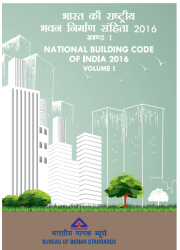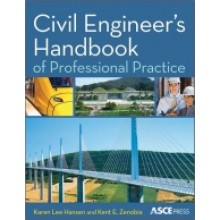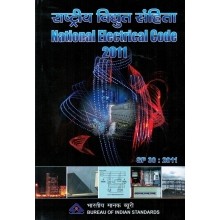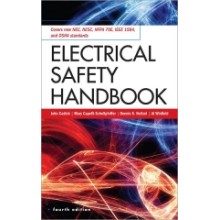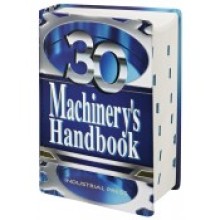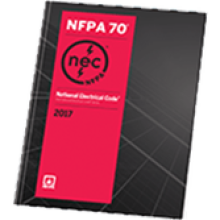SP 7-NBC : National Building Code of India 2016, (2 Volume Set)
Quantity:
-
Add to Compare
The National Building Code of India (NBC), a comprehensive building Code, is a national instrument providing guidelines for regulating the building construction activities across the country. It serves as a Model Code for adoption by all agencies involved in building construction works be they Public Works Departments, other government construction departments, local bodies or private construction agencies. The Code mainly contains administrative regulations, development control rules and general building requirements; fire safety requirements; stipulations regarding materials, structural design and construction (including safety); building and plumbing services; approach to sustainability; and asset and facility management.
The Code was first published in 1970 at the instance of Planning Commission and then first revised in 1983. Thereafter three major amendments were issued to the 1983 version, two in 1987 and the third in 1997. The second revision of the Code was in 2005, to which two amendments were issued in 2015.
Due to large scale changes in the building construction activities, such as change in nature of occupancies with prevalence of high rises and mixed occupancies, greater dependence and complicated nature of building services, development of new/innovative construction materials and technologies, greater need for preservation of environment and recognition of need for planned management of existing buildings and built environment, there has been a paradigm shift in building construction scenario. Considering these, a Project for comprehensive revision of the Code was taken up under the aegis of the National Building Code Sectional Committee, CED 46 of BIS and its 22 expert Panels; involving around 1 000 experts. As a culmination of the Project, the revised Code has been brought out in 2016 as National Building Code of India 2016 reflecting the state-of-the-art and contemporary applicable international practices.
The comprehensive NBC 2016 contains 12 Parts some of which are further divided into Sections totalling 33 chapters (see Annex 1). The salient features of the revised NBC (see Annex 2) include, apart from other changes made, the changes specially in regard to further enhancing our response to meet the challenges posed by natural calamities. The major changes incorporated in this third revision of the Code are as follows:
a) Provisions for association of need based professionals and agencies have been updated to ensure proper discharge of responsibilities for accomplishment of building project.
b) With a view to ensuring ease of doing business in built environment sector, a detailed provision for streamlining the approval process in respect of different agencies has been incorporated in the form of an integrated approval process through single window approach for enabling expeditious approval process, avoiding separate clearances from various authorities.
c) Further, with a view to meeting the above objective, the provision on computerization of approval process has been detailed, enabling online submission of plans, drawings and other details, and sanction thereof, aiding in speedier approval process.
d) The mechanism of ensuring certification of structural safety of buildings by the competent professional and peer review of design of buildings, have been further strengthened.
e) Requirements for accessibility in buildings and built environment for persons with disabilities and the elderly have been thoroughly revised and updated.
f) Provisions on fire and life safety have been thoroughly revised to meet the challenges of modern complex building types including the high rises.
g) Latest structural loading and design and construction codes including those relating to wind load,earthquake resistant design of buildings, steel design and foundations have been incorporated with a view to ensuring structural safety of buildings including against a disaster.
h) Provisions relating to all building and plumbing services have been updated keeping also in view the latest international practices as related to the country.
j) Provisions have been updated to ensure utilization of number of new/alternative building materials and technologies to provide for innovation in the field of building construction.
k) Construction management guidelines have been incorporated to aid in timely completion of building projects with desired quality in a safe manner within the budgeted cost.
m) Guidance has been provided for making buildings and built environment energy efficient and environmentally compatible, through the newly introduced and updated chapter on sustainability, namely Part 11 'Approach to Sustainability'
n) New chapters have been added on structural use of glass; escalators and moving walks; information and communication enabled installations; solid waste management; and asset and facility management.
The Code has been published in two volumes containing all the Parts and Sections.
Annex 1
CONTENTS OF NBC 2016
VOLUME 1
PART 0 INTEGRATED APPROACH – A PRE-REQUISITE FOR APPLYING THE PROVISIONS OF THE CODE
PART 1 DEFINITIONS
PART 2 ADMINISTRATION
PART 3 DEVELOPMENT CONTROL RULES AND GENERAL BUILDING REQUIREMENTS
PART 4 FIRE AND LIFE SAFETY
PART 5 BUILDING MATERIALS
PART 6 STRUCTURAL DESIGN
Section 1 Loads, Forces and Effects
Section 2 Soils and Foundations
Section 3 Timber and Bamboo
3A Timber
3B Bamboo
Section 4 Masonry
Section 5 Concrete
5A Plain and Reinforced Concrete
5B Prestressed Concrete
Section 6 Steel
Section 7 Prefabrication and Systems Building and Mixed/Composite Construction
7A Prefabricated Concrete
7B Systems Building and Mixed/Composite Construction
Section 8 Glass and Glazing
VOLUME 2
PART 7 CONSTRUCTION MANAGEMENT, PRACTICES AND SAFETY
PART 8 BUILDING SERVICES
Section 1 Lighting and Natural Ventilation
Section 2 Electrical and Allied Installations
Section 3 Air Conditioning, Heating and Mechanical Ventilation
Section 4 Acoustics, Sound Insulation and Noise Control
Section 5 Installation of Lifts and Escalators and Moving Walks
5A Lifts
5B Escalators and Moving Walks
Section 6 Information and Communication Enabled Installations
PART 9 PLUMBING SERVICES (INCLUDING SOLID WASTE MANAGEMENT)
Section 1 Water Supply
Section 2 Drainage and Sanitation
Section 3 Solid Waste Management
Section 4 Gas Supply
PART 10 LANDSCAPE DEVELOPMENT, SIGNS AND OUTDOOR DISPLAY STRUCTURES
Section 1 Landscape Planning, Design and Development
Section 2 Signs and Outdoor Display Structures
PART 11 APPROACH TO SUSTAINABILITY
PART 12 ASSET AND FACILITY MANAGEMENT
Annex 2
Salient Features of National Building Code 2016 (NBC 2016)
1) Detailed provision for streamlining the approval process in respect of different agencies in the form of an integrated approval process through single window approach thereby avoiding separate clearances from various authorities, with a view to ensuring ease of doing business in built environment sector.
2) Progressive computerization of approval process, for enabling online submission of plans, drawings and other details, and sanction thereof.
3) Updated mechanism of ensuring certification of structural safety of buildings by the competent professional and peer review of design of buildings.
4) Defining the roles and responsibilities of all professionals and contractors involved in a building construction project.
5) Comprehensive planning norms for minimum amenities to be provided in a city/town.
6) Detailed provisions relating to requirements for accessibility in buildings and built environment for persons with disabilities and the elderly.
7) Planning and development norms, such as, Transferable Development Rights (TDR) and Accommodation Reservation (AR).
8) Provisions for underground or multi-storeyed parking as also mechanized parking of vehicles.
9) Norms for solar energy utilization.
10) Requirements for buildings on podium for ensuring fire and life safety in such buildings.
11) Fire and life safety in modern complex buildings including the high rises, glazed buildings, atria, commercial kitchen and car parking facilities.
12) Updated structural design provisions for wind and seismic loads, imposed load due to helipad, and blast loads, for safe design and construction of buildings with due focus on ductile detailing.
13) Latest research and development inputs and provisions on concrete, steel and masonry buildings with a view to ensuring disaster resilient buildings.
14) Assessment of liquefaction potential of a site and ground improvement techniques for maximum utilization of land resources including at seismically vulnerable sites.
15) Updated provisions on engineered use of bamboo in housing and other building construction.
16) Promotion of use of agricultural and industrial wastes including construction and demolition wastes in building construction without compromising the quality and safety.
17) Inclusion of provisions on self compacting concrete, high performance concrete and steel fibre reinforced concrete.
18) Updated provisions on prefabricated construction technique for speedier construction.
19) New chapter on structural use of glass in buildings.
20) New and alternative building materials, and technologies for building construction such as, reinforced masonry, confined masonry building construction and masonry wall construction using rat-trap bond.
21) Construction project management guidelines for timely completion of building projects within the budgeted cost with desired quality.
22) Habitat and other welfare requirements for workers at construction site.
23) Inclusion of modern lighting techniques such as LED and induction light and their energy consumption.
24) New provisions on compact substations and updated provisions on installation of energy meters.
25) Comprehensive provisions relating to lightning protection of buildings.
26) Provisions on aviation obstacle lights; electric vehicle charging and car park management.
27) Protection of human beings from electrical hazards and against fire in the building due to leakage current.
28) Use of refrigerants for air conditioning addressing zero ozone depletion potential (ODP) and ultra-low global warming potential (GWP).
29) Inclusion of new and energy efficient options of air conditioning, heating and mechanical ventilation, such as variable refrigerant flow system, inverter technology, district cooling system, hybrid central plant using chilled beams, radiant floor components, and geo-thermal cooling and heating.
30) Thrust on envelope optimization using energy modelling, day lighting simulation, solar shade analysis and wind modelling software to optimize the air conditioning load.
31) Air conditioning, heating, and ventilation (HVAC) provisions considering adaptive thermal comfort conditions for energy efficiency.
32) Provisions pertaining to metro trainways and metro stations with respect to fire and life safety; and air conditioning, heating and ventilation for metro stations.
33) HVAC requirements for data centres and healthcare facilities; refrigeration for cold stores; efficient strategies for winter heating using reverse cycle operation, solar heating systems, ground source heat pump and electric heat pump; and modern system of mechanical ventilation for industries, commercial kitchen and underground car parking.
34) Updated provisions on building automation system to include the latest practices for web-based monitoring and control of performance parameters.
35) High speed lifts for tall buildings.
36) New chapter on escalators and moving walks for comfortable and safe movement of people.
37) New chapter on information and communication enabled installations in buildings.
38) Updated provisions on water supply, drainage and sanitation for modern high rise buildings and complexes.
39) Provisions relating to swimming pools covering hygiene and safety.
40) Updated provisions on rainwater harvesting.
41) New chapter on solid waste management covering various solid waste management systems within the building and building complexes.
42) Updated provisions on piped gas supply in houses, and in hospitals for medical purposes.
43) Promoting quality of outdoor built environment through updated provisions on landscape planning, design and development.
44) Promoting sustainability in buildings and built environment in tandem with relevant sustainable development goals.
45) New chapter on asset and facility management to cover provisions relating to management of building assets and associated services, also covering responsibilities of occupants for maintenance of facilities, such as structures, equipment and exterior property.
Write a review
Your Name:Your Review: Note: HTML is not translated!
Rating: Bad Good
Enter the code in the box below:
Copyright © 2014 Engineering Standards Bureau. All Rights Reserved.
Developed By Zoom Into Web


